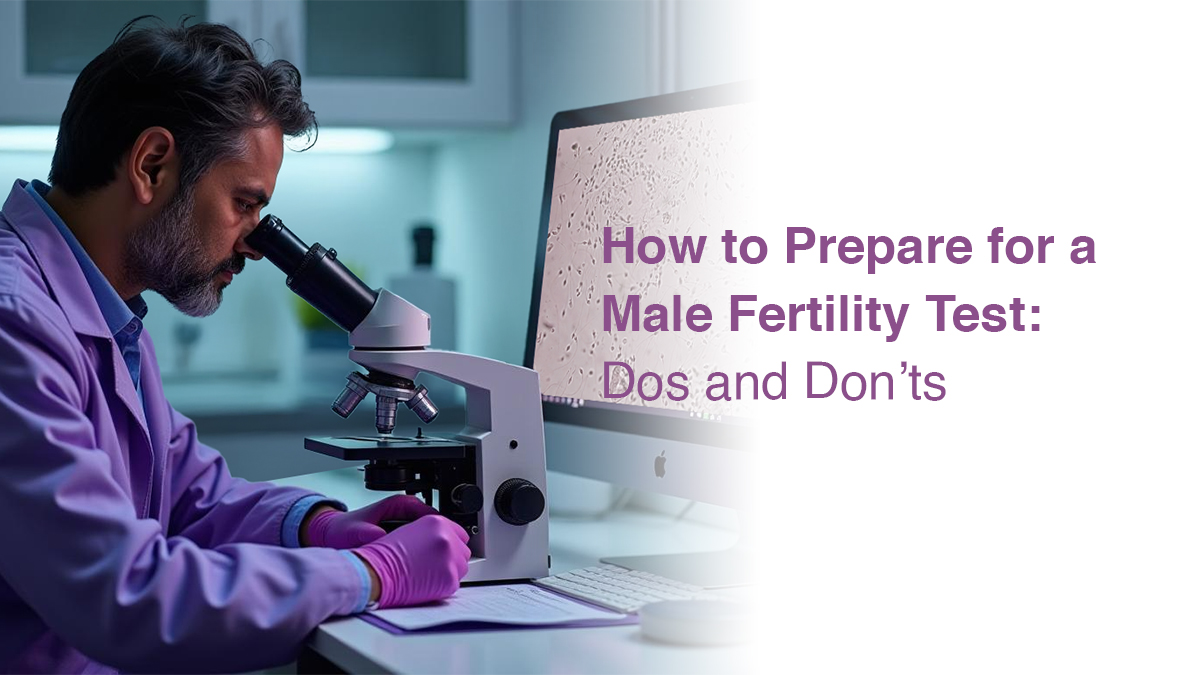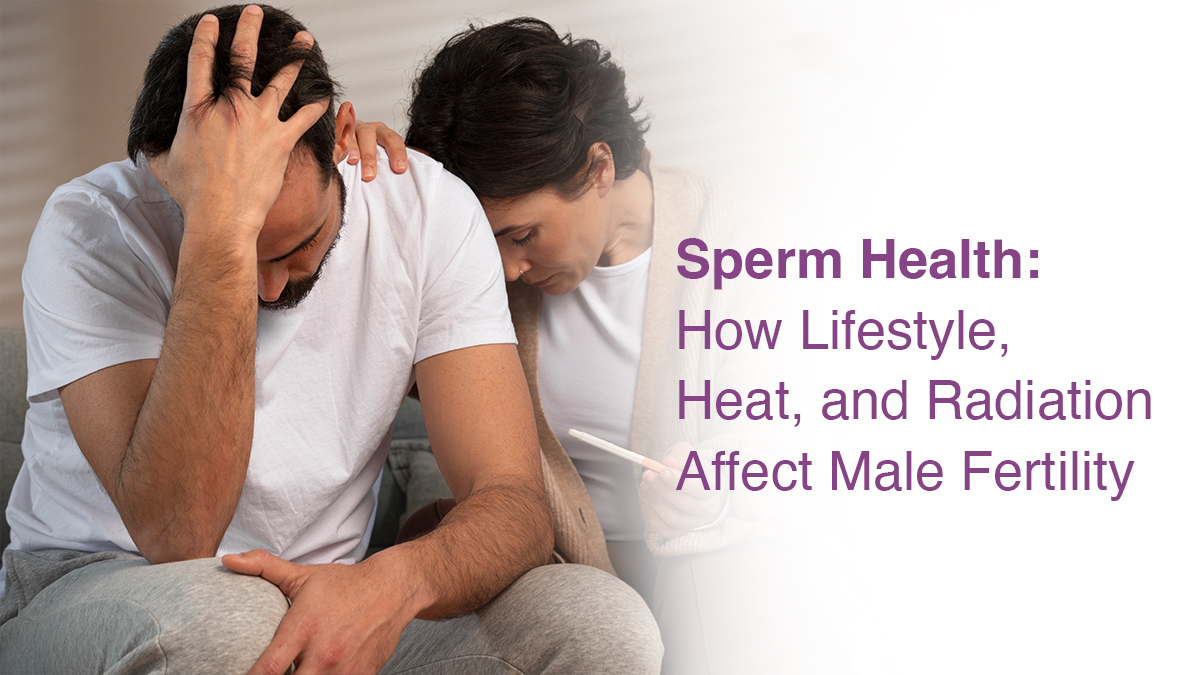
What is Testicular Atrophy: Symptoms, Causes, and Treatment

While it’s true that size really doesn’t matter in most situations, the size of the testicles matters for male health. The average testicular volume and length for Indian men are 18 ml and 3.8 cm, respectively. The testes are responsible for producing sperm and testosterone, critical to male fertility. Therefore, testicular size is deeply linked with male fertility. Abnormalities in the size and volume of the testes occur in 64% of men struggling with infertility. If left untreated, testicular atrophy may result in erectile dysfunction, testicular cancer and psychological problems.
What is Testicular Atrophy?
Testicular atrophy is a condition that causes a reduction in the size of testes in men of reproductive age. Since the testicular size shrinks gradually, you might not even recognise the condition in the early stages, unless you are trying to start a family.
Causes of Testicular Atrophy
The primary causes of testicular atrophy are:
Varicocele
Varicocele is a condition in which the veins around the testes get enlarged to varicose veins and may distort the scrotal structure. Scrotal atrophy disrupts blood flow to the testes and triggers testicular atrophy.
Infections
Infections can cause severe damage to the testicles. Orchitis, mumps, STDs and other viral infections in the reproductive tract may cause shrinkage of the testicles.
Advanced Age
Ageing can trigger a gradual decline in testosterone levels (andropause) among men. Low levels of this male hormone can then lead to a shrinkage of the testicles. Usually, this is not considered a pathological condition. Couples trying to conceive can opt for assistive reproductive therapies if normal conception is not possible due to andropause.
Trauma
Accidents impacting the pelvis, neglected physical trauma or side effects of aggressive treatments, such as for cancer, may lead to testicular atrophy.
Hormonal Therapies
Hormonal therapies, such as testosterone supplementation and steroidal treatments for bodybuilding and other purposes may trigger scrotal and testicular atrophy if taken without professional guidance. Exposure to toxins and drugs may also cause shrinkage of the testicles.
Undescended Testes
In cryptorchidism, the testicles are present in abnormal locations. Testes that do not drop down into the scrotal sac may undergo atrophy.
Symptoms of Testicular Atrophy
Early diagnosis increases the chances of complete reversal of testicular atrophy, helping the testes regain their normal size and firmness. The common symptoms of testicular atrophy include:
- Reduced size of testicles
- Pain or discomfort in testicles
- Reduced sexual desire
- Fatigue or mood swings
- Loss of body muscle
- Reduced or poor growth of pubic/facial hair
- Changes in texture and firmness of testicles
- Tightening of scrotal embrace, resulting in changes in sensation around the testicles.
How Does Testicular Atrophy Affect Fertility?
Shrinkage of the testicles affects the number of cells capable of spermatogenesis (sperm generation). This directly impacts the sperm count. Additionally, inadequate size of the testes can cause a reduction in the production of testosterone and other male hormones, which may then cause sperm shape and size abnormalities. All these translate into fertility issues among men.
Diagnosis of Testicular Atrophy
Regular professional scrotal exams can uncover potential atrophy early and prevent the condition from affecting male fertility. While the condition is diagnosed with a painless physical exam, fertility specialists advise other procedures to identify the underlying causes of testicular atrophy:
Ultrasonography
Diagnostic scans measure the testicular volume and determine the internal scrotal structure. These help the professionals to estimate the size of the testes and identify abnormalities.
Blood Tests
Fertility specialists may prescribe blood tests to check the hormonal levels and presence of infections. These help them to develop a suitable testicular atrophy treatment plan.
Medical History
Your fertility specialist will check your medical history. They may ask questions to determine possible signs of trauma, infections or aggressive treatments that may have triggered atrophy.
Testicular Biopsy
A biopsy is needed in case the testes have an unusually hardened mass. Here, a tiny portion of the of the testicular tissue and some testicular fluid is extracted. Pathologists conduct a series of exams to identify the reasons for the shrinkage in the testicles.
Treatment of Testicular Atrophy
Early diagnosis of testicular atrophy increases the chances of reversing the condition. Fertility specialists may advise one of the following testicular atrophy treatments:
HRT
When the underlying cause of shrinkage is hormonal, fertility specialists may put you on hormonal replacement therapy. This helps restore hormonal balance and promote testicular health. This treatmentcan even cure testicular atrophy.
Infection Management
Your fertility specialist may put you on antibiotics and other treatments to cure the infections causing shrinkage of the testicles. They may also advise further testicular atrophy treatment if the condition persists.
Lifestyle Management
Eliminating smoking, excessive drinking, and drug use can significantly improve fertility in men. A balanced diet and regular exercise help maintain good overall, reproductive, and testicular health.
Conclusion
Testicular health plays a significant role in male fertility. Couples trying to conceive must note that even if the condition reaches the stage of irreversibility, assistive reproductive techniques can help you conceive. It is best to consult a reputed fertility clinic providing you with comprehensive male fertility care such as Oasis Fertility. Find an Oasis Fertility Clinic near you or call 1800-3001-1000 for immediate assistance. You can also connect with our fertility helpdesk via live chat to seek support.


fill up the form to get a
Free Consultation
Avail 0% interest on EMI
All Procedures | No Upper Limit
Frequently Asked Questions
Can you reverse testicular atrophy?
Can testicular atrophy produce sperm?
Is testicular atrophy an emergency?
Can I conceive with testicular atrophy?
How we reviewed this article:
- Current Version
- March 10, 2025 by Oasis Fertility
- November 14, 2024 by Oasis Fertility






